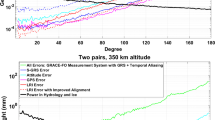Summary
The first Tethered Satellite System (TSS-1) Electrodynamic mission has been launched aboard the Space Shuttle STS-46 on July 31, 1992, as a joint mission between the United States and Italy. A 500 kg, spherical Satellite (1.6 m diameter), attached to the Orbiter by a thin (0.24 cm), conducting, insulated wire (Tether), has been reeled upwards from the Orbiter payload bay to a distance of 256 m when the Shuttle was at a projected altitude of 296 km. ASI, the Italian Space Agency, had the responsibility for develo** the resuable Satellite, and the Core Equipment, while NASA had the responsibility for develo** the Deployer system and the Tether, integrating the payload and providing transportation into space. ASI Core Equipment, mounted on the Satellite (SCORE) provides a dynamic package, to study the TSS dynamics, as a first goal, and to verify the possibility of using the TSS Satellite as a platform for future experiments in the microgravity field. The dynamic package consists of a three-axis linear accelerometer (SLA), mounted on the Satellite payload module, and a gyro package, mounted in the service module. The SCORE dynamic package uses the same gyro used for the Attitude Measurements and Control System (AMCS) of the Satellite. The SLA uses as a sensor a low-g pendolous-design instrument, which requires a temperature control. The accelerometer measures accelerations along three orthogonal axes parallel to the Satellite body axes. The SLA-Z-axis is parallel to the Satellite axis around which the Satellite is spinning. The SLA accuracy is 10 micro-g over a range from −20 to 20 mg for theX andY axes, and from −4 to 10 mg for theZ-axis. The SLA bandwidth is from DC to 4.5 Hz. The gyro package consists of four single-axis floating-rate integrating gyroscopes. Three of these units sense the angular variations around the Satellite's three principal body axes, the fourth one is mounted skewed 73° between theX andY axes. Each gyro may be operated in either coarse or fine mode. The input rate limits are from 0 to 0.8 degrees/s (0 to 0.1333 r.p.m.) for the fine, and from 0 to 2.0 degrees/s (0 to 0.333 r.p.m.) for the coarse mode. The paper describes the SCORE package and briefly reviews the basic Dynamics Functiontal Objectives (DFO-1 through DFO-13), selected to carry out the investigation of the TSS dynamics, and schematically overviews the theoretical activity carried out at Padua University in preparation for comparison between computed and experimental spectra.
Similar content being viewed by others
References
A. K. Misra andV. J. Modi:A survey on the dynamics and control of tethered satellite systems, inTethers in Space, vol.62 of theAdvances in the Astronautical Sciences (Univelt Inc., 1987), p. 667.
W. P. Baker et al.: Tethered Subsatellite Study, NASA TMX-73314, MSFC, March 1976.
C. Bonifazi:Tethered Satellite System (TSS) Core Science Equipment. Advances in the Astronautical Sciences, vol.62 (American Astronautical Society Publication, Tether in Space, 1986) (AAS 86-214), p. 173.
S. Bergamaschi et al.: Preliminary Analysis of Dynamic Noise during Mission STS-46, inX Meeting of the Micro-Gravity measurement Group, Huntsville, November 1992.
S. Bergamaschi et al.: A Continuous Model for Tether elastic vibrations in TSS, AIAA Paper No. 86-0087,AIAA XXIV Aerospace Sciences Meeting, Reno, NV, January 1986.
S. Bergamaschi andA. Catinaccio:J. Astron. Sci.,40, 189 (1992).
S. Bergamaschi andF. Bonon:J. Guidance, Control Dynamics,15, 1284 (1992).
S. Bergamaschi andB. Quadrelli:Magnetically Induced Librations in Conducting Tethers Astrodynamics 1987, vol.65 of theAdvances in the Astronautical Sciences (Univelt Inc., 1988), p. 441.
M. Smargiassi andM. Martino:SLA Post Mission Engineering Assessment, Alenia Technical Note TS-TN-AI-234, November 1992.
Author information
Authors and Affiliations
Rights and permissions
About this article
Cite this article
Bergamaschi, S., Bonifazi, C. TSS core equipment. Il Nuovo Cimento C 17, 123–141 (1994). https://doi.org/10.1007/BF02506684
Received:
Accepted:
Issue Date:
DOI: https://doi.org/10.1007/BF02506684




